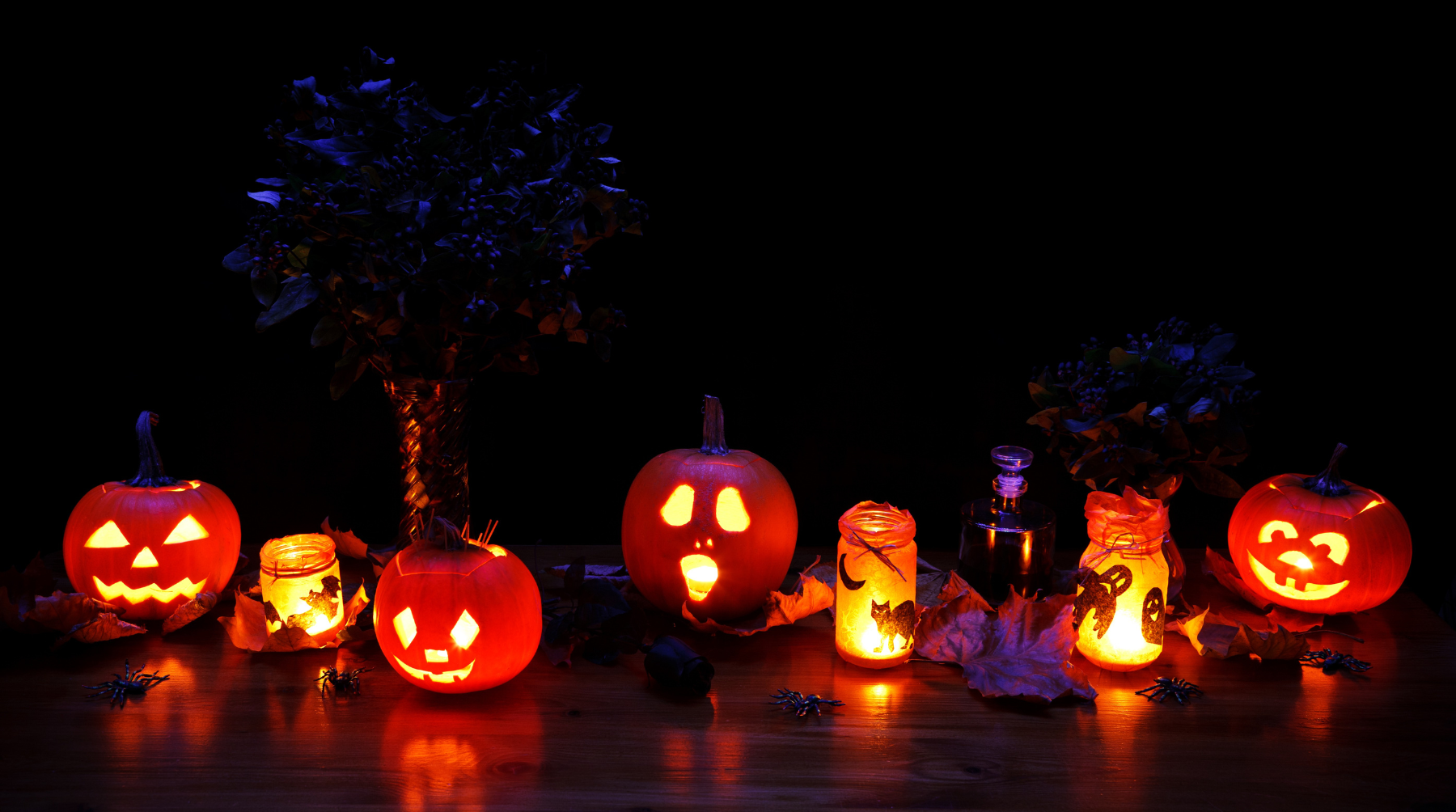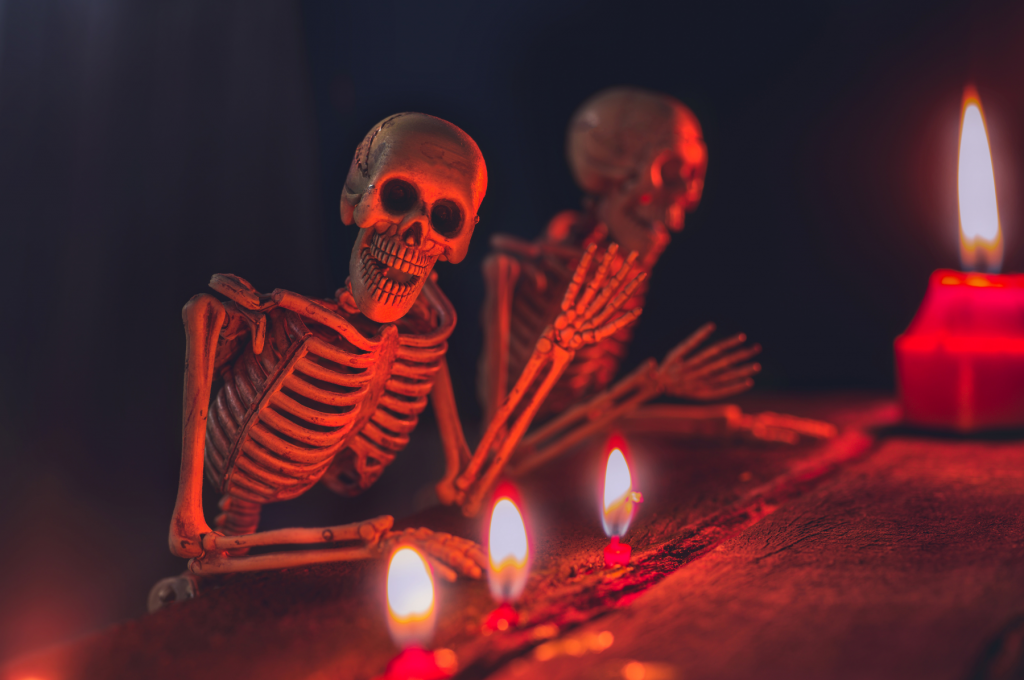
The History of Halloween
Published on October 26, 2023
For Halloween, eATLAS is moving outside our regular deep dives into the stories of Chicago into the history of the holiday. For Halloween-themed adventures, take the Medieval Torture Museum’s “Are You Brave Enough” tour of the bloodiest spots in the Loop, check out our tour of the gravesites of the famous Chicagoans buried in Graceland Cemetery, and you can also play Headquarters Beercade’s “Malice in Wonderland” until the end of October.
By Dave Lifton (@daveeatschicago)
Although virtually every culture has some way of recognizing spirits and paying tribute to the deceased, the ancient Celtic pagan festival of Samhain is widely acknowledged as having the truest lineage to Halloween. Held for three days at the midpoint of the autumnal equinox and the winter solstice, Samhain was essentially their new year’s celebration, commemorating the end of summer and the last bounty to be harvested before the cold winter months. The colors chosen reflected the duality of the time: orange for the harvest and warmth, and black for the darkness to follow.
The Celts also believed that, during this transition, the barrier that separated the real and spirit worlds was at its thinnest. To welcome the spirits of their ancestors, they had a feast complete with bonfires, dancing, fortune-telling, and animal sacrifices. But they were also worried about the possibility of unwanted visitors, so they wore masks and costumes to hide their true identities.
Symbols and traditions from pagan rituals were appropriated into Christianity as it spread throughout Europe, most notably with Christmas and Easter, to make conversion to Christianity more palatable. In the eighth century, Pope Gregory III moved All Saints’ Day, which had been observed in the spring for 400 years, to the same period when Samhain was celebrated–Nov. 1. Another recognition of the dead, All Souls’ Day, was designated as Nov. 2nd in the 10th century. All Saints’ Day was alternately known as All Hallows’ Day, which meant the night before was All Hallows’ Eve. Over time, that was shortened to Hallowe’en, and ultimately to Halloween.

Irish and Scottish traditions had a major influence on how we celebrate Halloween, and may even be responsible for the symbol of the holiday. According to an Irish folktale, a ne’er-do-well named Stingy Jack used his cunning to trap Satan. Jack refused to let the devil go until he promised Jack that he wouldn’t take his soul upon his death. But when that day arrived, Heaven didn’t want him either, so Jack’s spirit was left to wander the Earth in the dark. Satan mockingly threw him a burning coal so that he could see where he was going. Jack then fashioned a makeshift lantern by carving out a turnip and placing the coal inside it, and the jack-o’-lantern was born.
Most sources believe that trick-or-treating comes from souling or its secular version, guising, both of which can be traced back to at least the 15th and 16th centuries. Costumed children would go from door-to-door and giving some type of performance in exchange for food or money.
In North America, All Hallows’ Eve had been celebrated by Anglicans and Catholics in the colonies (although the Puritans refused due to its pagan roots). But it wasn’t until the 19th century, when Scottish and Irish migration was particularly high, that Halloween truly took off on this side of the Atlantic. Pumpkins replaced turnips because they are larger and easier to carve than a turnip, and it certainly couldn’t have hurt that the pumpkin is both orange and seasonal.
Guising also picked up a twist in North America, with children playing pranks, which may have evolved from the mischief involved with the British holiday of Guy Fawkes Day on Nov. 5th. The first known usage of the phrase “trick or treat” was reported in a depiction of Halloween in a newspaper from Sault Ste. Marie, Ontario, Canada in 1917.
But what we now think of as Halloween stems from Hiawatha, Kan. Elizabeth Krebs was tired of having her well-tended garden destroyed by vandals every Halloween. So, in 1914, she organized a “Halloween Frolic,” a town-wide party with a parade, costume contests, and games. Its success grew to a bigger event the next year, with adults encouraged to join in, and word spread to other towns. It’s still held annually in Hiawatha.
In moving past its religious origins, Halloween has morphed from a day for kids to dress up and go trick-or-treating into a monthlong celebration of all things associated with the day. Horror movie festivals, haunted house pop-ups, and themed bar crawls fill up our calendars, and virtually every food becomes available in pumpkin spice flavor. By the time “spooky season” concludes, Thanksgiving and Christmas are just around the corner.

The Adventure starts when you say it does.
All eATLAS Adventures are designed and built by experienced eATLAS Whoa!Guides. They're always on. Always entertaining. And always ready to go.
Check out our Adventures!